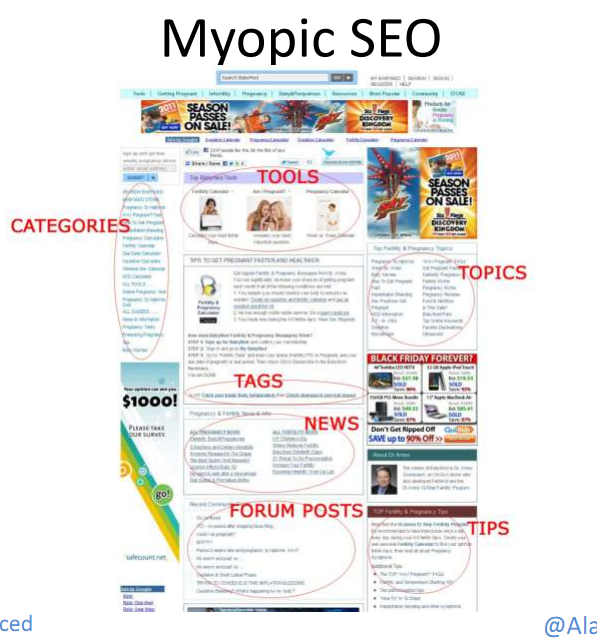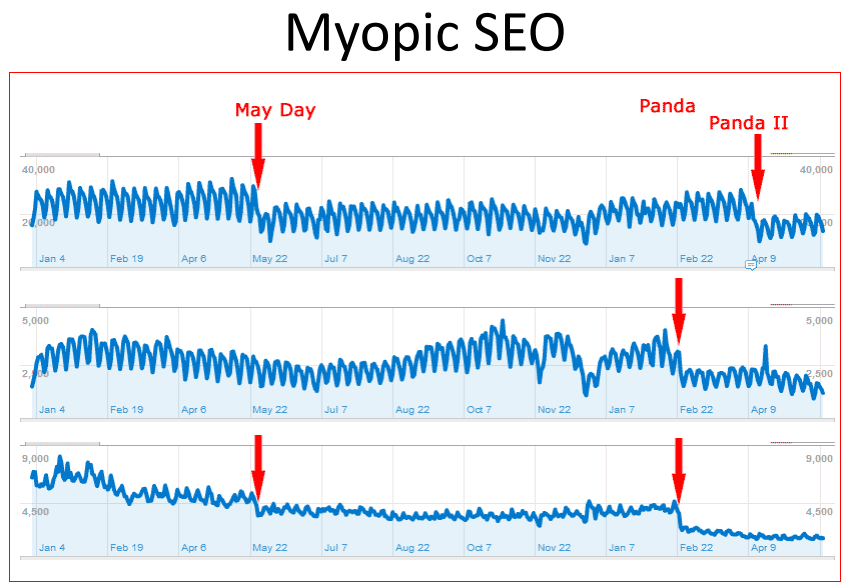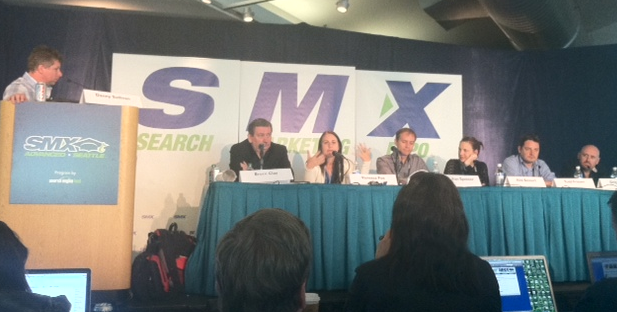At this week’s SMX Advanced Seattle conference, marketers from across the globe gathered to discuss search and social best practices and myriad beasts marketers must overcome. Google’s Panda update was a particularly hot topic – even months after the algorithm launched. And adding to the Panda fire was Matt Cutts’ declaration that there are more Panda iterations to come.
Experts offered case studies and plenty of other insights on how to practice SEO in a post-Panda search landscape. The leading takeaway points seem to have two general themes: breaking down and rebuilding. First, marketers have to break down existing notions about SEO and their affected or at-risk sites. Once they’ve accomplished this, they can work on moving forward.
1. Refocus your energies on sustainable SEO.
A running theme at SMX Advanced was that marketers need to change how they think of SEO. Namely, don’t think of the algorithm.
Alan Bleiweiss, Forensic SEO consultant, explained that he frequently comes across sites that struggle from “myopic SEO.” Myopic SEO refers to search strategies directed at Google’s algorithm, where people are looking for the “magic bullets” to success. He offered an example of a site that had all kinds of categories, various types of highly topical content and ads.  These are the types of sites that suffered from the Panda update, and they are likely to continue to struggle unless they alter their approach.
These are the types of sites that suffered from the Panda update, and they are likely to continue to struggle unless they alter their approach.
Instead of offering unique, accessible content, he described the myopic SEO site as one that crams as much shallow information as possible onto a page. The site he points to clearly lacks a focused content marketing strategy, and it fails to consider how a user will be able to navigate this page.
Other SMX Advanced Experts corroborated, suggesting that marketers should enter SEO with a mind frame for user experience, thinking about whether or not people can find the information on a page that they want. In a sense, they should be thinking about SEO from a SERP’s perspective – the SERP wants to send people to pages that will fulfill their queries. Vanessa Fox, the creator of Google’s Webmaster Central, said “[marketers should] ask ‘does this page provide the info that people need?,’ instead of ‘does this page have all the optimization it possibly could?'”
Doesn’t this sound familiar? As Brafton has reported, Google offers post-Panda SEO insight in its Webmaster Central blog urging marketers to deliver “the best possible user experience on your websites and not to focus too much on what they think are Google’s current ranking algorithms or signals.”
Failure to move out of the “myopic” SEO mindset will leave you at risk of losing visibility every time Google issues a new update. Bleiweiss shared some cache reports that prove the point. 
2. Eliminate poor content.
Experts agreed that marketers have to get rid of dead weight content to keep their sites afloat. Todd Friesen of Performics advised businesses to determine which content pages aren’t being indexed by Google and to get rid of them, and Bruce Clay supported his theory, advocating the removal of low-quality content.
Clay also asked marketers to consider the ad content on their sites and prune where possible. He encouraged marketers to maintain a generous ratio of original content to ads, and Search Engine Land has reported in the past that ad-to-content ratio might influence Panda.
When you’re trying to decide which content is “poor content,” start with the obvious: which pages aren’t good reads? Greg Boser of BlueGlass Interactive went as far as to suggest that many of the site owners hit by Panda were probably aware of the fact that they were skating by with some thin content. So, first step: read over your site and find the weak pages.
 You can also identify weak content by tracking the MozRank of each page to determine which content pages are linkbait and which are not. Also, weed out the low-quality pages using your Analytics to see which pages users are engaging with and which ones they aren’t (ie: bounce rate versus navigation to another page). More on using an interaction-heavy analytics to come…
You can also identify weak content by tracking the MozRank of each page to determine which content pages are linkbait and which are not. Also, weed out the low-quality pages using your Analytics to see which pages users are engaging with and which ones they aren’t (ie: bounce rate versus navigation to another page). More on using an interaction-heavy analytics to come…
When it comes to actually removing the thin pages from your site, we’ll refer you to Vanessa Fox’s very thorough “Removing Pages From Google: A Comprehensive Guide for Content Owners.”
As an alternate option, SEO expert and author Stephan Spencer suggested marketers take their best content and move it to a new domain.
Once you’ve cleaned the slate, you’ll be in a position to put sustainable SEO in practice. In the Part Two of this blog, we’ll share the insight from SMX Advanced experts on building or rebuilding your search engine optimization with Panda-friendly best practices.

